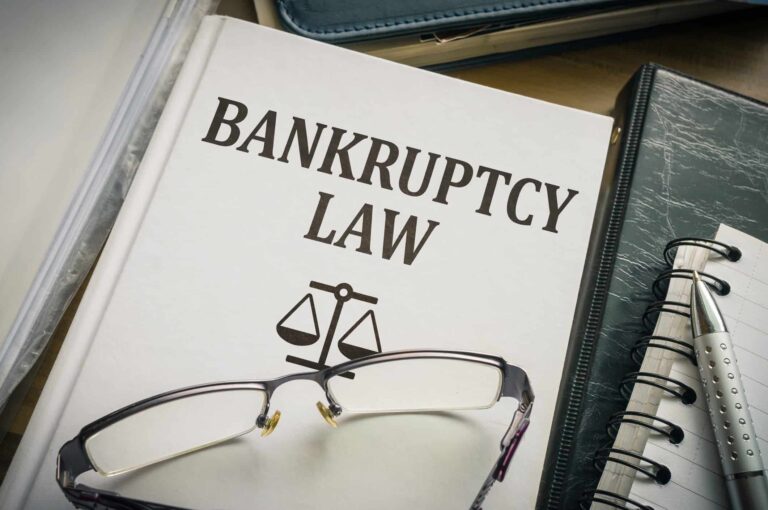Repairing Your Credit Score After Bankruptcy

Filing for bankruptcy can be one of the toughest decisions a person can make. While it may be easy to focus on the negative aspects of filing, it’s important to look toward the future and start making changes that will help you rebuild your credit. Although bankruptcy can sound and feel intimidating, it’s important to understand how to navigate bankruptcy so that you know what to do once your bankruptcy proceedings have concluded.
One of the most important parts of navigating bankruptcy is creating a game plan for how you will manage your finances moving forward. It’s important to remember that just because you have filed for bankruptcy doesn’t mean you cannot have a successful financial future. Let’s take a look at some of the best ways to begin repairing your financial standing so that you can get your credit trustworthiness back up to where it should be.
Make on-time payments
Missing one or two credit card payments might not feel like a big deal in the moment, but this is the easiest way to slip back into unmanageable credit card debt. It is imperative that you make on-time payments on all your debt balances. Your FICO score (the credit score issued by all three credit reporting agencies) determines your credit trustworthiness. Making on-time payments affect 35% of that score. This means missing even one payment could start a domino effect that will impact your overall credit score.
Making on-time payments will establish your credit trustworthiness as you build back your credit. If you are able to, make it a point to regularly pay more than your minimum payment. This will help you drive down your debt balance so that you keep it at a manageable amount. If you feel like your debts are starting to climb again, using debt repayment methods like the Snowball Method can help you regain control.
Stick to a budget

The strongest tool in your arsenal for taking control of your finances is building a budget. There are many online budgeting tools you can turn to that will help you establish a budget, but they all work in a similar manner.
A budget allows you to track your income and your outgo every month. When you write down how much money you know you will be getting every month, you’ll start to develop a sense of how much money you actually have to spend. With this in mind, you’ll be able to develop a realistic plan of how much money you should be spending on certain things every month.
While you can’t change fixed expenses like your rent, car payment, and other bills, you can manage how much you spend on luxuries like eating out and shopping.
Having a written budget that you can turn to throughout the month will allow you to see exactly how you spend your money. Once you better understand your spending habits, you’ll be able to make the necessary adjustments throughout your day so that you don’t overspend.
When you take control of your money, you’ll be surprised at how easy it can be to find Financial Freedom.
Apply for a new line of credit
After bankruptcy, your qualifying debts will be wiped clean, and you’ll be left needing to rebuild your credit score. The best way to start working towards a trustworthy credit score is by opening up a new line of credit. However, opening a new account can be tricky if you have just come out of bankruptcy. These three options can help you navigate what can be a difficult obstacle.
Credit Builder Loans
Credit Builder loans are a unique tool as they work to build your credit trustworthiness while allowing you to save. Unlike a traditional credit card, where you receive a set amount that you’ve been approved for, a credit builder loan puts a loan amount into your savings account. You’ll then need to make regular payments to the lender for the duration of the loan agreement, typically 6 to 24 months.
After the loan term is up, you will receive the full amount of the loan, and some lenders will even pay you back the interest you paid. The benefit of using a credit builder loan is that you will essentially be funding yourself over time, all while having your payments help build your credit trustworthiness. This is because your payments will get reported to the three major credit bureaus. To learn more about credit builder loans, visit your local credit union, community bank, or participating online lenders.
Secured Credit Card
Getting a credit card after bankruptcy can be scary, but it is necessary to help you build back your credit. Luckily, there are some credit cards designed specifically for high-risk individuals. Secured credit cards work very much the same as traditional credit cards; however, they are a practical tool for individuals who have no credit or are trying to build back their credit trustworthiness.
Secured credit cards are intentionally designed for risky consumers and require a deposit to be put down when opening the line of credit. This refundable security deposit is typically the same amount as the loan being provided by the secured credit card lender. As with a traditional credit card, it’s essential to keep up with payments on a secured credit card. Not only are those payments reported to major credit bureaus, but if you miss payments, you could face losing your deposit.
Becoming an Authorized User
This last option requires having an individual, usually a family member or close friend, who is willing to take a chance on you as you build back your credit. Becoming an authorized user is when someone with good credit trustworthiness agrees to have your name as an authorized user on their account.
If you do become an authorized user, you can enjoy the benefit of having the account holder’s payments reflect your credit trustworthiness as well. As the account holder makes their payments on time, you can watch your credit score receive a positive boost.
Apply for a loan with a co-signer
One of the major downsides of bankruptcy is that it will be difficult for you to secure a loan because of your lack of credit trustworthiness. One of the ways to circumvent this all while rebuilding your credit is by working with a cosigner. Whether you’re trying to make a vehicle purchase or take out a personal loan, a cosigner can help you reestablish your credit because they’re vouching for your ability to make loan payments. Having a cosigner takes a lot of trust, however. If you do fail to make payments, the cosigner will be held responsible for repayment.
Avoid job hopping
While this next tip might not be the first thing that comes to mind when trying to rebuild your credit, it’s still a tip you should consider seriously. When you seek out a loan application, the lender will examine your employment history, as this helps them gain a sense of confidence you’ll be able to make payments on the loan.
If you have an employment history that is dotted with frequent job hopping, this may make a lender apprehensive about lending you money. While job hopping doesn’t directly affect your credit score, it can make it difficult for you to take out a loan that will then help you rebuild your credit score.
Monitor your credit report and score
Monitoring your credit report and credit score will help you understand your credit trustworthiness, allowing you to spot any inaccuracies that may have been reported. Additionally, staying up to date on your credit report and score will give you a boost of motivation to keep practicing good personal finance habits.
Understanding your credit score and how it is calculated is also important, as it allows you to productively move forward as you rebuild your credit.
Every year, you can get a free copy of your credit report from the three major credit reporting bureaus; Equifax, Experience, and TransUnion. When you review your credit report, look for loan accounts that might not belong to you, balances that no longer exist, and other inaccuracies that might impact your overall score.
How long will it take to rebuild my credit after bankruptcy?
Rebuilding your credit after bankruptcy can be a long and arduous process. This is mainly because lenders will be wary of the bankruptcy line item on your credit report. However, establishing a solid financial plan for becoming credit trustworthy again can help speed up how long it takes to rebuild your credit. In some cases, you can start seeing improvement as soon as one year after your bankruptcy.
One of the main factors that determine whether you will be able to rebuild your credit quickly is whether you are making regular, on-time payments. Additionally, you should be taking all the other necessary steps to help build your credit. This means taking out loans you can afford and making sure you pay those loans back in a timely manner.
It’s also important to remember that having a bankruptcy line item on your credit report does not impact you for the entirety of your life. More importantly, it does not have to be a financial death sentence. If you’ve moved forward with Chapter 13 bankruptcy, this will remain on your credit report for seven years after you are discharged. If you’ve filed Chapter 7 bankruptcy, this will stay on your credit report for ten years.
Stay on top of your finances
While filing for bankruptcy and undergoing bankruptcy proceedings can be stressful, intimidating, and a big blow to your personal financial goals, it does not have to be the end of your financial future. Every month can be a brand new opportunity to make strides in getting back to good financial standing. This information can help get you back on your feet and push your credit score in the right direction.

Contact A Bankruptcy Attorney Today. We can answer all of your questions.
Sources:
O’Shea, B. (2023). How to Use Debt Snowball to Pay Off Debt.
What’s In My Credit Score. (2023).






